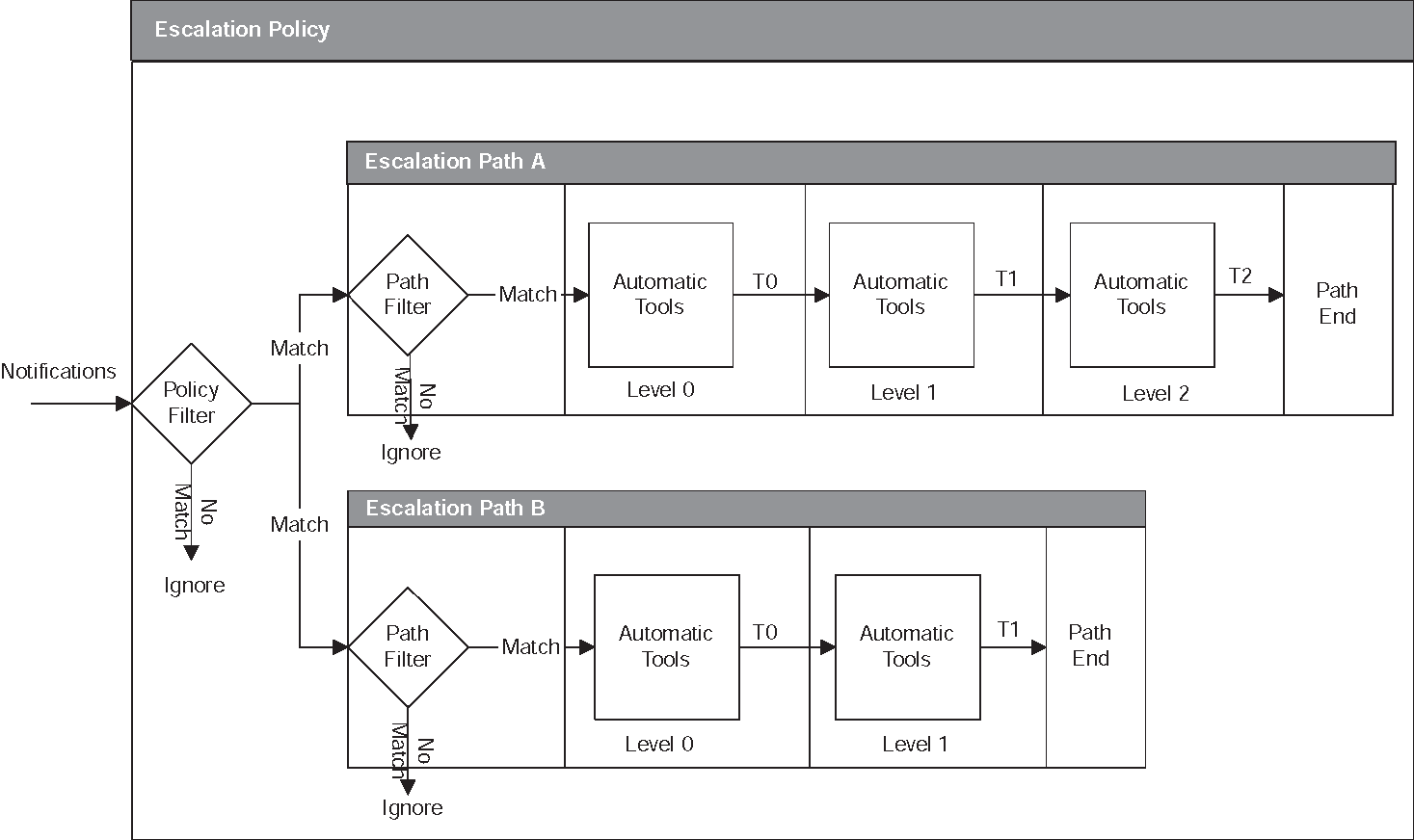An escalation policy is a set of related escalation paths. An escalation policy includes a policy filter and one or more escalation paths, as shown in Escalation policy structure. Notifications that match the policy filter are passed to the escalation paths. If a notification does not match the policy filter, it is ignored. If a policy filter is not defined, all notifications are passed to the escalation paths.
An Escalation Path also includes a filter and up to six escalation levels. A notification must match both the policy filter and the path filter to begin at the first escalation level, Level 0.
Each escalation level includes one or more automated tools to invoke and a time duration, after which a notification advances to the next level. An escalation level cannot have a duration of less than 1 minute. You can, if necessary, create an escalation level that does not invoke a tool.

When a notification matches both the policy and path filters, it starts at escalation level 0. When a notification reaches level 0, the tools associated with level 0 are invoked immediately. The notification remains at Level 0 for the specified duration, shown as T0 in Escalation policy structure, before escalating to Level 1. At this point, all Level 1 tools are invoked and, after the duration of T1, the notification escalates to Level 2. This process repeats through each level defined for the path. If the notification changes during escalation and no longer matches the path and policy filters, it leaves the escalation path without invoking any additional tools.